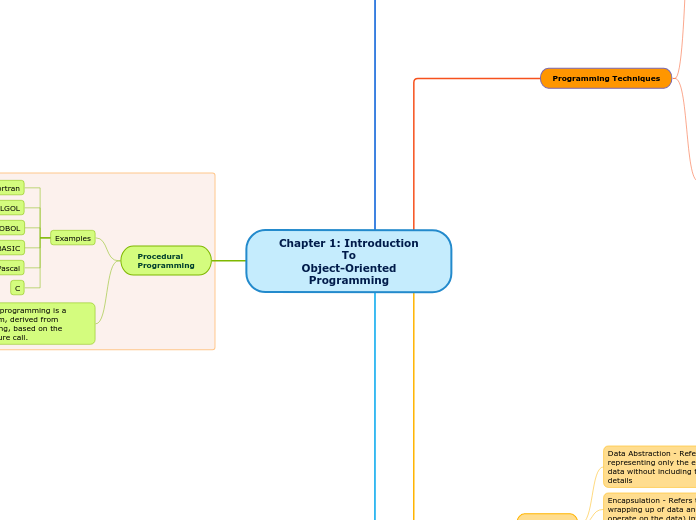Chapter 1: Introduction
To
Object-Oriented Programming
Concept & Terminologies
Object, Attribute, Behaviour
Objects - an instance or specific example of a class
Attributes - data value or a state that describes an object and helps you to tell one object from another of the same class
Behavior – operation or function that an object can perform
Classes & Objects
Class - A template or blueprint to create an object
Object - An instance of a class
Programming Techniques
Examples
Java
Javascript
Python
Javascript
C++
C#
Ruby
PHP
Perl
Swift
Types
Object-Oriented Approach
(OOA)
A process of defining the problem in terms of real-world objects with which the system must interact.
Tasks Include:
Identifying objects
Organizing the objects
Defining the object attributes
Defining the behaviour/ function of the objects
Describing how the objects interact
Object-Oriented Design
(OOD)
A process of defining the components, interfaces, objects, classes, attributes, and operations that will satisfy the requirements.
Tasks Inclue:
Restructuring the class data
Implementation of methods
Implementation of control
Implementation of associations
Object-Oriented
Approach & Design
(OOAD)
A combination of both OOA and OOD.
Advantages
Easy to understand
Easy to maintain
Provides re-usability
Reduced development time & cost
Improves the quality of the system due to program reuse
Disadvantages
Hard to determine all the necessary classes and objects required for a system
Most of our project development teams are familiar with traditional analysis & design
Does not lead to successful reuse on a large scale
without an explicit reuse procedure
Features
Data Abstraction - Refers to the concept of representing only the essential features of a data without including the non-essential details
Encapsulation - Refers to the mechanism of wrapping up of data and methods (that operate on the data) into a single unit (class)
Inheritance - Refers to the concept by which one class derives the properties of another class
Polymorphism - Refers to the ability of an object to take on many form. Eg: buttons on remote control
Unified Modelling Language
(UML)
Is a graphical language designed to capture the artifacts of an OOAD process.
Provides you with a way to create and document a model of a system.
Procedural
Programming
Examples
Fortran
ALGOL
COBOL
BASIC
Pascal
C
Defiinition:Procedural programming is a programming paradigm, derived from structured programming, based on the concept of the procedure call.
